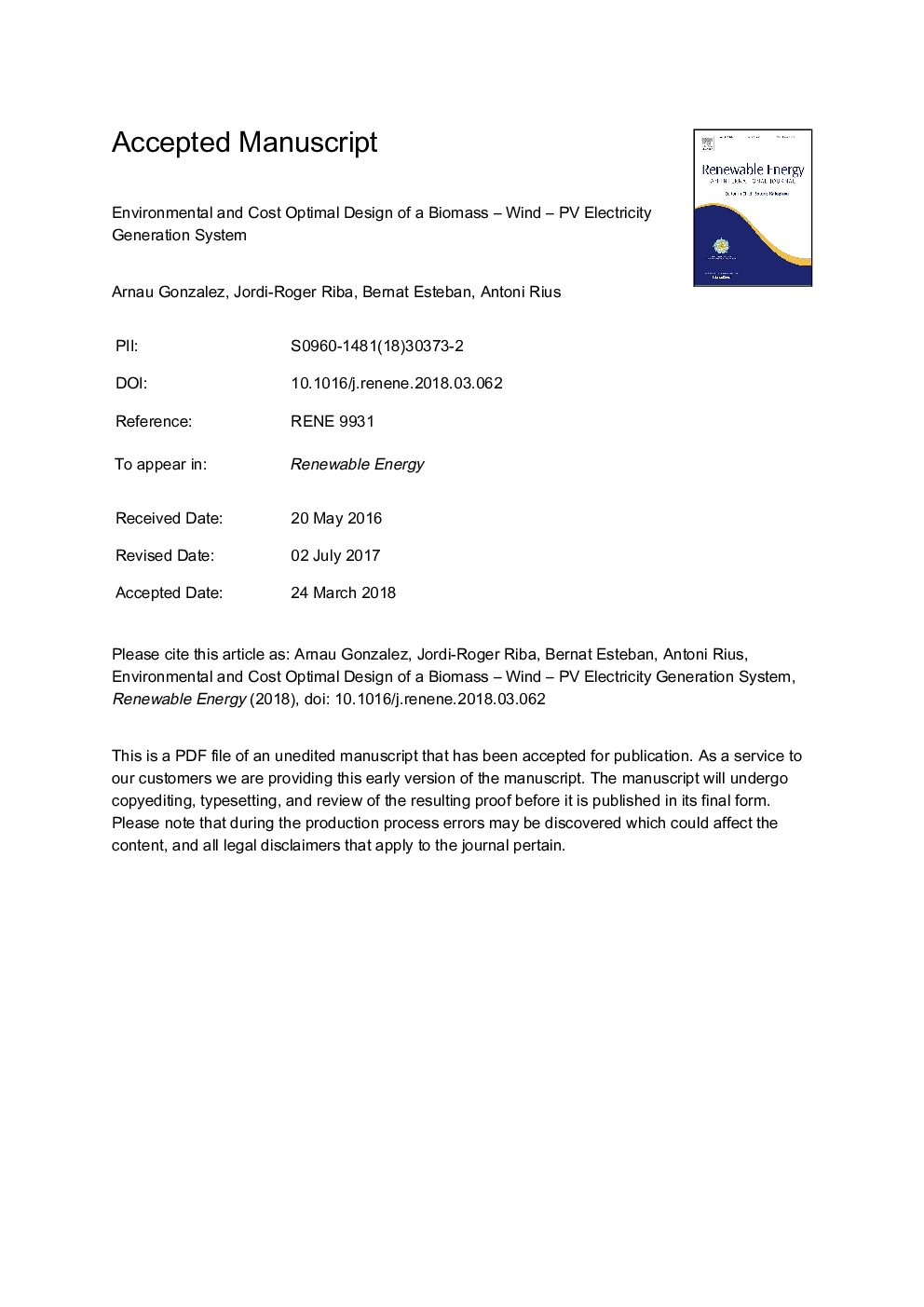| Article ID | Journal | Published Year | Pages | File Type |
|---|---|---|---|---|
| 6764257 | Renewable Energy | 2018 | 20 Pages |
Abstract
This work describes a methodology to optimize a grid-connected hybrid renewable energy system (HRES) that hybridizes photovoltaic, wind and forest biomass energy sources taking into account cost and environmental impact criteria from a life-cycle perspective. The developed model has been tested in a sample township in central Catalonia. The results show that life-cycle cost and life-cycle environmental impact are contradicting criteria. Low environmental impact layouts highly dependent on RES have higher costs than the ones more reliant on the electricity from the public grid, which present high environmental impact. A sensitivity analysis has been performed to analyze the trade-offs between different energy sources of the system, showing that wind power is the RE source with higher impact on the system since it presents lower cost and lower environmental impact, compared with biomass and photovoltaic power. Another important conclusion that can be drawn from such sensitivity analysis is that improving the rate of return on investment in HRES would be a very beneficial measure to encourage the use of renewable energies for electricity production, as it has significant positive outcomes in terms of both cost and environmental impact reduction.
Related Topics
Physical Sciences and Engineering
Energy
Renewable Energy, Sustainability and the Environment
Authors
Arnau Gonzalez, Jordi-Roger Riba, Bernat Esteban, Antoni Rius,
